November 10, 2014
Cosmic Quest – A History of Astronomy
Heather Couper and Dr Nigel Henbest
Report by: Andy Sawers
“We have one hour to cover thousands of years of astronomy,” said Heather Couper. She and Nigel Henbest did not fall short in that challenge. Report by Andy Sawers
Nigel opened the talk with a much-loved if apocryphal 19th century anecdote about a lecture given by the Astronomer Royal of that day in which he discussed an ancient theory that the Earth was flat, resting on the back of four elephants standing on the back of an enormous turtle. The Astronomer Royal was challenged by a woman in the audience who asked, “What is the turtle standing on?” “Another turtle,” said the Astronomer Royal. “And what is that turtle standing on?” the woman demanded to know. “Madam,” said the Astronomer Royal, “it’s turtles all the way down!”
Orion is of course well known to us as the constellation of the hunter. But in the ancient southern hemisphere, where Orion is (to northern eyes) upside down, they saw Orion as three fishermen harpooning a fish. “That’s the great thing about constellations: the myths and legends are fascinating,” said Heather. “We invented the myths first then pinned myths to the skies so people would remember them.” And we needed to map the skies for navigation and for calendar-making.
Winter druids
Heather debunked the logic of druids gathering at Stonehenge on midsummer’s day to see the Sun rising over the heel stone. “That’s crazy! It doesn’t make sense at all. Why would you want to mark the midsummer solstice?” she said. “Much more sensible to stand at the heel stone on midwinter’s night and see the sun setting between the two biggest lintels because that would represent a turning point in the year when winter is turning to spring – and that would give people hope and give them a chance to think about planting their crops.”
The druids ought to dress warmly and celebrate in a slightly different way, she suggested.
Of course there are many other such stone calendars across the world, including a giant saw-tooth solar calendar comprising a dozen or so towers in the Peruvian desert at Chankillo which was used to track the winter and summer solstices. (The site featured in the BBC Prof Brian Cox series, Wonders of the Universe.) Astronomical anthropologists are still trying to understand the motivation of our ancestors for making such enormous stone calendars, Heather said.
The map above
Noting how the invention of writing changed everything, Nigel said that in ancient China they believed that the heavens mirrored the Earth. Because the emperor couldn’t always rely on his spies to keep him informed about events in far flung provinces, he used astronomers to tell him what was happening because the heavens mapped the different parts of the empire. They used surprisingly sophisticated instruments which can be seen today at the Beijing ancient observatory.
In AD 1054 the Chinese astronomers saw a star appear in the constellation that we call Taurus. They said it was so bright it could be seen in daylight for 23 days and at night for two years. Today we see the remains of that explosion: the Crab Nebula.
Back in ancient Greece, they worked out that the lunar eclipse is caused by the Earth’s shadow falling on the moon – and because the edge of the shadow is always curved, they realised as early as 500BC that the Earth had to be a sphere and not flat.
The precision of ancient Greeks
The ancient Greeks also invented the world’s first computer – the Antikythera mechanism. Made about 2000 years ago, it had precision gear wheels cut by hand with a dial showing the sun, the moon and its phases, and a calendar, and it could predict solar and lunar eclipses. Arthur C Clarke argued that if our technology had carried on from then at the same pace then we would not now be sending to probes to planets, we would be heading to the stars, Nigel said. Unfortunately the Greek civilisation faded, the Romans weren’t interested in this kind of knowledge, and so the learning passed eastwards to the Arabic countries.
Back in AD 1141, Nigel said, Persian polymath Omar Khayyam – he’s best known as a poet – calculated the length of the year and came up with a figure (365.242424 days) that was more accurate than the Gregorian calendar that we use today.
Moving a few hundred years ahead, Heather explained that Copernicus thought that the Greek calculations of the motions of the planets were wrong – and he found they were hopelessly out of kilter with reality. He came to the conclusion that “the Earth is puny in comparison to this huge incandescent orb we call the Sun – surely it makes sense that the planets orbit the Sun and not the Earth!” Ptolemy’s ideas were overly complicated in attempting to explain the motion – especially the retrograde motion – of Mars, for example.
“You find in science that the simplest explanations are the most probable,” Heather said. So Copernicus’s idea was, of course, that the planets go around the Sun and that the inner planets – including the Earth – go around the Sun more quickly than Mars, further out, and that explains the retrograde motion. Like a car overtaking another on the motorway, the car you’ve overtaken appears to go backwards. On his deathbed he published De revolutionibus orbium coelestium (On the Revolutions of the Heavenly Spheres).
Tycho Brahe, Kepler and Galileo
More observations were needed to verify Copernicus’s ideas. Enter the great Dane Tycho Brahe, famed for his ‘gold’ nose (actually it was made of brass) having lost his own nose in a duel at university over who was the best mathematician in the world. Wealthy and flamboyant, he had his own observatory, financed by the Danish king. Johannes Kepler, an introverted mathematician, later worked with Brahe, using Brahe’s observations to formulate ideas about planetary motion which he thought were driven by a force not unlike magnetism. He concluded that planets moved in ellipses, and that they move more quickly when nearer the Sun than when further away.
All of this was theory, however, until the development of the telescope, which was probably invented by Hans Lippershey in Amsterdam. Galileo, however, heard about the invention and made a better one, immediately seeing its potential as an early warning device to enable the Venetians to spot enemy ships two hours before they could be spotted by ordinary lookouts with their own eyes. (A very worthwhile museum in Florence houses his telescopes and other instruments and works.)
Galileo saw that Jupiter has four moons – which was the start of the process of confirming the Copernican theory – and drew maps of the moon, revealing its craters and maria (seas). However, it was a British observer, Thomas Harriot, who was the first to draw a maps of the moon.
Isaac Newton’s apple
Isaac Newton really did see an apple fall – giving him the inspiration to think about gravity. In fact, Heather said, the apple tree can still be seen at his home in Woolsthorpe Manor, Grantham. “A strange man – I wouldn’t like to have met him,” Heather said. “He was very reclusive, couldn’t communicate and would probably just tuck himself away with his sums – and his cat.” He had the fattest cat in Cambridge, Nigel said, as it ate all the meals brought to and ignored by Newton.
Edmund Halley – “A fabulous man, one of my heroes of astronomy,” said Heather – persuaded Newton to publish his Principia Mathematica which, amongst other things, introduced the inverse square law of gravity.
Halley saw a comet while on his honeymoon in Islington and believed that it had been seen before. Looking at historic records of comet appearances, he calculated that, if Newton’s theory of gravity was correct, this comet would reappear in 1758. He was, of course, absolutely right. Halley actually spent very little of his time on comets or astronomy. In his lifetime he was a spy, a sea captain, and the inventor of the diving bell.
A bigger universe
Two more of Heather’s heroes are William and his sister Caroline Herschel, Germans based in Bath, and both of them musicians. He built bigger and bigger telescopes and in 1781 he discovered a new planet, Uranus. “At that stroke, he doubled the size of the solar system,” Heather said.
King George III may have had “a very bad press”, Heather said, but he was just about the only royal who has ever been interested in science – so much so that William Herschel wanted to name the new planet ‘George’. The name didn’t stick, however. William H also made the first map of the Milky Way.
Spectroscopy and Cecilia Payne
The discovery of spectroscopic analysis in the 19th century made it possible to find out the chemical composition of stars – their chemical ‘fingerprints’ – but right up until about 100 years ago it wasn’t possible to be sure about the proportions of those chemicals. Most astronomers then thought there would be, like the Earth, a lot of iron, oxygen and silicon.
But then in the 1920s Cecilia Payne-Gaposchkin came along. She wanted to go to Cambridge – they would let her study but they wouldn’t give her a degree because she was a woman (a practice continued until after the Second World War, Nigel – a Cambridge man – said) so she went to Harvard. She worked out a way of calculating the proportions of the elements in the Sun, determining that hydrogen is by far the most abundant element, with helium making up most of the rest, and everything else was less than 2%. “And nobody believed her,” Nigel said. “Of course, she was just a woman!” Astronomer Henry Norris Russell, her supervisor, didn’t believe her, but a few years later discovered for himself that, indeed, she was right.
So where do all the other elements on Earth come from? In the 1950s the problem was solved. A team of four people, Fred Hoyle, Willy Fowler and Geoffrey and Margaret Burbidge, produced a paper explaining how nuclear synthesis works. As Nigel said, the Sun is performing the alchemists’ dream of turning simple elements into more complicated elements, and then some are made when stars explode. By the way, Margaret was a director of the Royal Observatory Greenwich in 1972 but did not get the usual title that goes with the job – Astronomer Royal – again, because she was a woman.
Maverick Fred
Fred Hoyle was “one of the most maverick scientists you’ve ever met,” said Heather. “Today in science you tend to find that people work together by consensus. You don’t get people like Fred who come up with their own crazy ideas.” One of his own crazy ideas was that the universe never changes – it’s in a ‘steady state’.
“As a young research student I used to think that Fred was barmy – but I interviewed him a couple of times and I’m now beginning to realise what a loss we’ve suffered. We need more mavericks like Fred,” said Heather. “We need more individual scientists to speak out with their own ideas. I really miss Fred massively.”
In the mid-1960s, two Bell Labs engineers, Arno Penzias and Robert Wilson, were using a large horn antenna but couldn’t get rid of a persistent hiss. Initially they thought it was caused by pigeon droppings in their antenna, so the pigeons were “discouraged with decisive means – a shotgun!” But the hiss wouldn’t go away and they discussed it with a research team at Princeton University who had been working on the theory that the universe would be ever so slightly warm after the Big Bang (a phrase coined by Fred Hoyle when he wanted to disparage the whole idea of the universe exploding!). The hiss was found to be the cosmic microwave background radiating at a temperature of 2.7 Kelvin – as predicted by the Big Bang theory.
Radio astronomy is born
Stanley Hey was working on radar during the Second World War and discovered a lot of ‘noise’ coming from the Sun that was blocking our radar defences. It turned out that the noise was from a massive sunspot which was pouring out radio waves. The discipline of radio astronomy was born – but Stanley’s ideas were “nicked” by Bernard Lovell to develop Jodrell Bank, Heather said.
“Today we can now tune to many other wavelengths rather than just the optical – which was the equivalent of looking at the notes around middle C,” she said. “With all these new instruments we’re discovering the Universe is incredibly violent – discoveries like black holes which were ‘discovered’ in 1783 in Yorkshire.” John Michell, the rector of a parish church, presented a paper to the Royal Society in which he predicted black holes.
Today, in just the last 15 years, we’ve discovered by indirect means nearly 2,000 planets orbiting other stars. Most of the planets are very big, like “hot Jupiters”, but there are a few Earth-like planets. As our technology gets better, we’ll be better able to find smaller, rocky planets. Is there life? “I’m pretty convinced there are microbes on Mars, I’d be prepared to say there’s possibly life on Jupiter’s moon Europa, almost certainly there are the raw materials for life on Saturn’s moon, Titan.
But intelligent life? In trying to detect signs of alien life by looking for radio signals, “maybe we’re being old fashioned. Maybe it’s a bit like thinking that people might communicate with us by smoke signals.”
“But when we pick up that signal, when we get that phone call from ET, that’s going to be when the history of astronomy moves on,” concluded Nigel. “It will be time for the next chapter.”
Posted under: Flamsteed, Flamsteed Lecture, Meeting Report
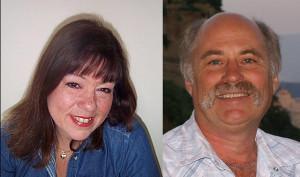
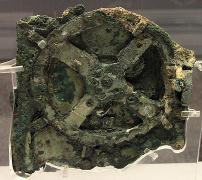
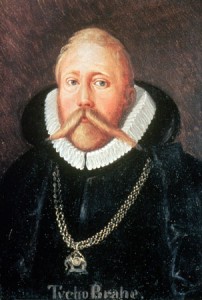
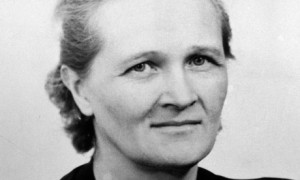
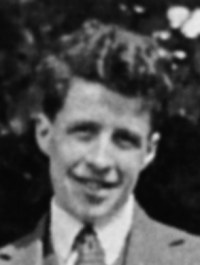

You must be logged in to post a comment.